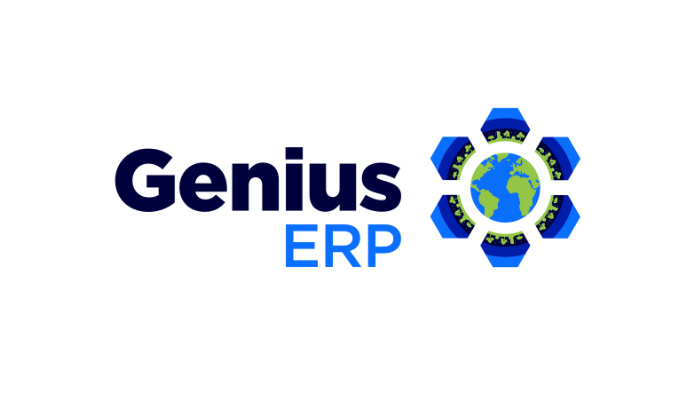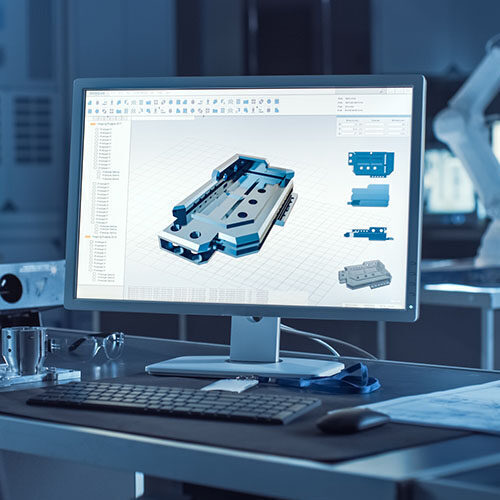
As business owners, we’re always looking for the latest technology to help our businesses become more efficient, more profitable, and to grow and reach new markets. In the manufacturing industry I’ve seen a lot of chatter recently about technologies such as smart factories, manufacturing 4.0, and embracing artificial intelligence(AI), but the ‘AI’ that I think manufacturers need to be concerned with is Abandoned Implementation of ERP systems.
Implementing an ERP system is one of the biggest technological changes you can make for your business — it will help you to streamline your business processes, be more organized, and ultimately help you grow as a company. But it is also one of the most difficult tasks you can take on as a manufacturer. There is a huge learning curve with an ERP system, and it takes time, money, and effort on the part of your team to get the system up and running.
Unfortunately all too often I run into companies that have become victims of ‘AI’ — they have started to implement a new ERP system, but somewhere along the way they have fizzled out, and never got their system up and running. In fact, up to 75 percent of ERP implementations are failures. Learning to identify and avoid the pitfalls and stumbling blocks that can hold you up will help you move forward with your project and avoid the ‘AI” trap.
It’s not a lack of time, it’s a lack of vision
The number one reason I hear from manufacturers wanting to delay, or completely abandon, the implementation of an ERP system is lack of time. Company executives will recognize a need for the software, make a large investment in purchasing the system, and then when it’s time to actually install the ERP, the company will come back to me and say “We don’t have the time to put the system in place, maybe in 6 months we can do it,” or “Our operations manager says he is already too busy, he needs at least 3 months before he can make it happen.” Time and again manufacturers will come to me and say that they just don’t have the time right now to invest in setting up a new ERP.
And when they do, I answer back: you do have the time, what you are lacking is the vision. This might seem a little caustic, but frankly speaking there will never be a right time to implement an ERP. Does that mean I think you shouldn’t do it? No. It means you need to make the time for it now, and clearly communicate your vision, and your company’s needs, throughout your organization.
Manufacturers who come to us to purchase an ERP are companies that are on the cusp of rapid growth, or already growing. These manufacturers need a solution to make their operations more efficient, and have recognized that an ERP is the right tool to increase their throughput. But because they are growing they are busy! And six months down the line, as the company continues to grow, they will be busier, the operations manager will be even more overwhelmed, and that manufacturer will still not have time to put their ERP in place—and most likely will abandon the implementation project altogether.
My advice: embrace the disruption and live with the instability for a while. As a growing company, you are already functioning at a hectic pace. You know your team can handle it, so, as the saying goes, there is no time like the present. Investing the time to put the system properly in place now will put you in a much better place in six months time.
The best way to get your staff on board with the implementation project is to communicate your vision. You, or someone in your company recognized the need for an ERP. But now you are experiencing push back from your employees because even though they know a new system was purchased, and even though the may appreciate that a new system is needed, they might not entirely understand why, and they might not want to go through the disruption to how they do their jobs. That’s natural, change is difficult.
I’ll be very straightforward with you—implementing an ERP is tremendously disruptive, and one of the biggest projects you will ever undertake as a manufacturer. It will impact every department in your organization, many people in your company will be personally affected, and it will change how your employees do their jobs. If they don’t understand why the new system is being put in place, they will resist the change, and you’ll risk the project falling apart completely.
It’s on you to share your vision with your team. Have straightforward and open lines of communication with your staff. Let them know why the company needs an ERP, how it will streamline operations, and the benefits it will bring to the entire organization. But also be open and honest about the disruption it will bring to the workplace, and the time and resources it will take to implement. If your staff understands your vision, and understands why they need to change how they do their jobs, they will be more receptive to the system, and your implementation will stay on track.
It’s also important to get key users and stakeholders within your company on board with the new system from the very beginning. If you know how important the operations manager will be to the ERP implementation process, get him involved with the system from the start. Make sure he understands the importance of the new system to the business and that he is an invested participant in the project. This way instead of being someone who can delay and derail the implementation process, he is an ally and a partner—he’ll actually help you get other people on board.
I would also strongly advise you to pick an internal champion for the project. You will obviously have a selection team in place that helped evaluate and select an ERP, but I strongly encourage you to pick a single person to act as a champion for the project, and to be responsible for the system as a whole. This individual needs to be able to walk a tight line between having a great deal of authority and influence over the company, but someone who is also open, approachable, and has excellent communication skills. Your champion needs to be someone who has the ability to influence others within your organization, the authority to escalate issues and get them resolved quickly, but also be someone who your staff feels comfortable coming to with their concerns and issues. After your ERP is in place this person should continue to act as an overseer of the system, ensuring the system is running smoothly, that the data in the system is accurate, and be a resource to turn to when an issue or problem arises.
Train your system like a new staff member.
I’ll be the first to admit that an ERP is not a magic wand. An ERP is an excellent system that can connect all of your departments, increase throughput, and cut costs. But at the end of the day it is only a computer program—a computer program making quick and accurate calculations from the data you have given it. And the old saying definitely runs true “garbage in, garbage out.” If you set the system up with bad data, it won’t do anything well.
Think about it: when you hire a new employee you take the time to train her correctly. You don’t throw her to the wolves and expect that she will master the job on her own; instead you invest months into training and coaching her, helping her to perform her job well. Think of onboarding your ERP in the same way—you have to train the system the same way you would train a new employee. It’s obviously not the same process, but you need to program the ERP system with good data and adjust the parameters accordingly to get the system up and running correctly.
Now imagine every department in your company is onboarding a new key employee at the same time—a difficult and disruptive task to say the least, and your company will needs to put time and energy into getting things up and running smoothly again. Onboarding an ERP is similar: you need to transfer knowledge and data into the system, you need to take time to make adjustments to get the system running smoothly, and you need to integrate the new system into your team. This process will have a few growing pains along the way, but if you approach it with the same care and understanding as you would a new employee, you’ll have a much better success rate.
Plan a short implementation timeline.
I know an ERP can take months or even years to set up completely, so it may seem counterintuitive, but I urge you to plan a short implementation process, nothing longer than 4 to 6 months. Too many times I have seen manufacturers set long implementation timelines, only to see the project at risk of being abandoned a year down the road. With a long timeline it’s all too easy to keep delaying the project thinking I’ll get to it next month (when I have time!), only to find a year passes and no progress has been made.
Also a year is a long span of time within a company, and the longer the time frame you give for implementation, the greater the chances of something unforeseen happening, like a key employee leaving the company, or a crisis popping up in another area of the business, that can derail the entire project. I know there is a chance that these can happen anytime, but there is less of a chance of one of these things occuring over a shorter period or time than a longer period of time.
And I can tell you from experience that if you start an implementation project, and then have to pause or delay it for a few months, you’ll have a very difficult time getting that project back on track. You’ll probably not only abandon your current ERP implementation, but you will also have a more difficult time next time you try to implement a project of the same size and scale.
If you start a project and you plan for it to take 9 months, and after 6 months you need to delay the project for some reason, you’ve asked your team to put in a lot of extra hours and energy into something for nothing. Everything you’ve asked them to do will have to be redone (trust me on this—you will think you can start off where you left but this is never the case). And if you failed once in the past, it is going to take a lot more motivation to get people back on board again, and your staff will be much more resistant to try again. If you stall a project it’s not just the dollars of the consultant implementing the project that you have lost, it’s the energy, the motivation, and the trust of your staff.
The way to overcome this problem is to break your implementation project down into phases. Pick a set of priorities that you can realistically implement in a 4 to 6 month timeframe and work hard on getting those features up and running first. This requires a lot of planning and prioritizing from your team, and you will need to sit down with your key stakeholders to identify what is needed most from your ERP. This will also help you identify what features and functionalities are dependent on other components. Be honest with your staff that not everything needs to be, or will be implemented in phase one. Your production department may really want a certain feature in place, but let them know that it can go ahead until you have your inventory management under control.
If you start an implementation project that involves everything, and an unforeseen delay occurs, all the work you have previously done will be lost, and you’ll have to start from square one again. But if you prioritize and plan to implement your ERP in phases, you will have a much better chance of succeeding. Not only will you get key features of your ERP up and running quickly, you’ll be able to build upon the success you have achieved, not only giving your staff tools to help them streamline their jobs, but extra accolades and motivation for a job well done.
Implementing an ERP is a major project, and one of the biggest—and most disruptive—tasks you can take on as manufacturer. But if you can succeed, and avoid the pitfalls of ‘AI’ you’ll have accomplished a major goal and set your company up for future success.
Get your eBook Scared to implement a new ERP?
"*" indicates required fields



